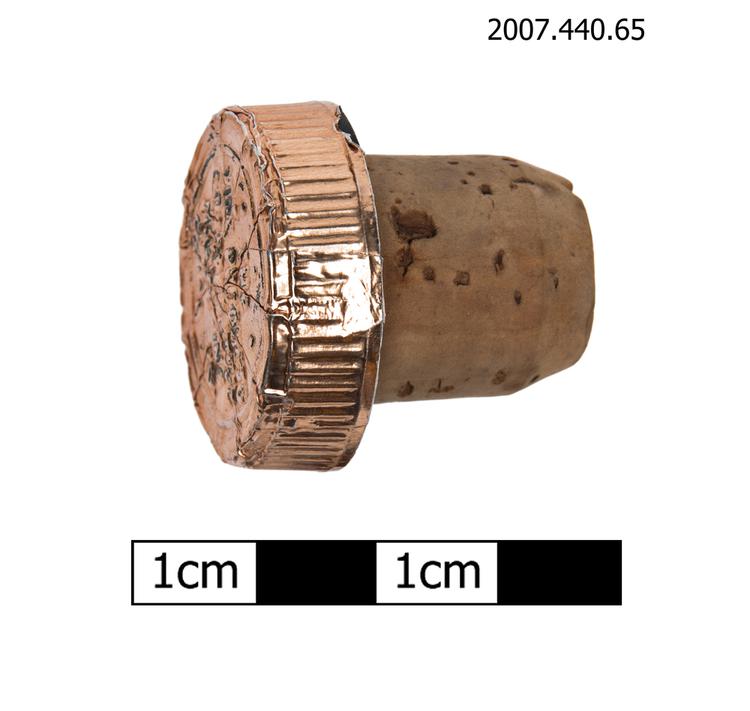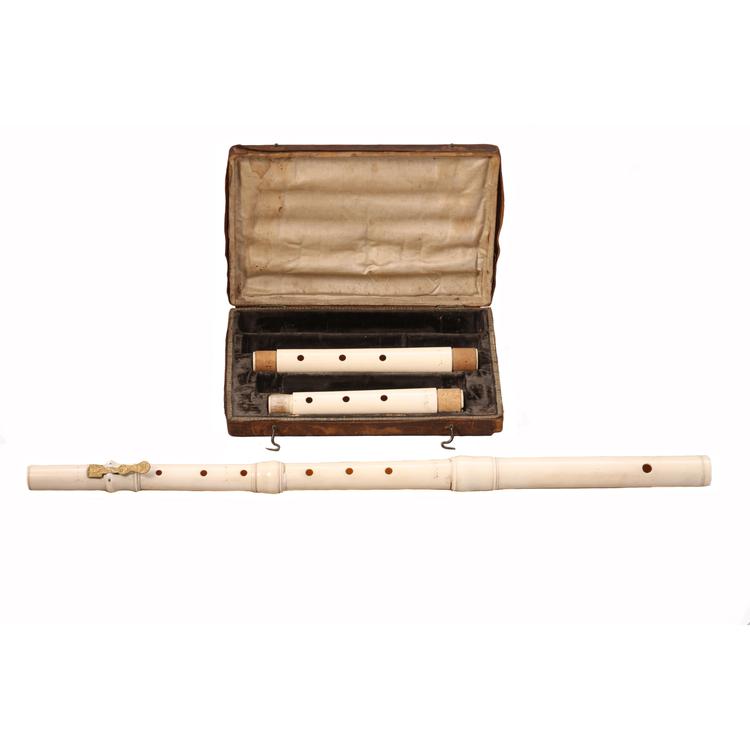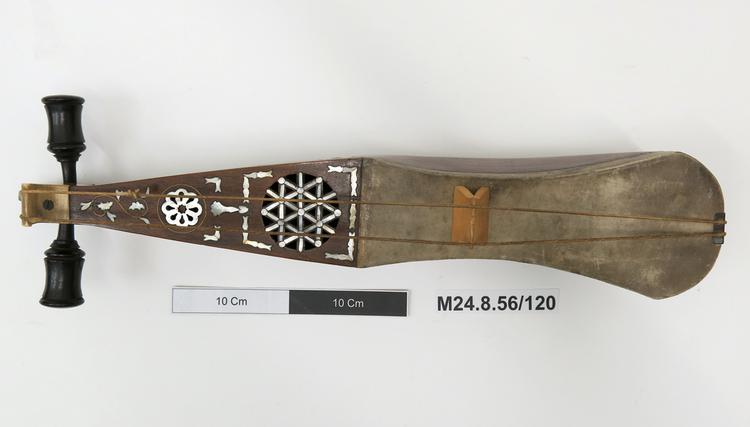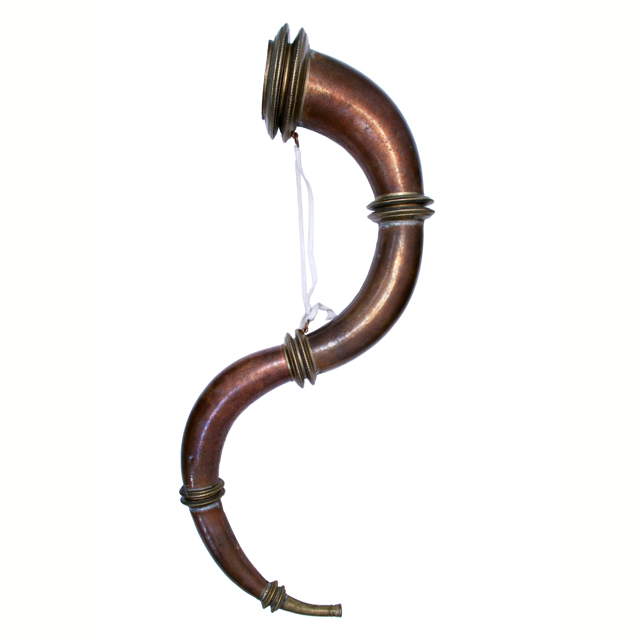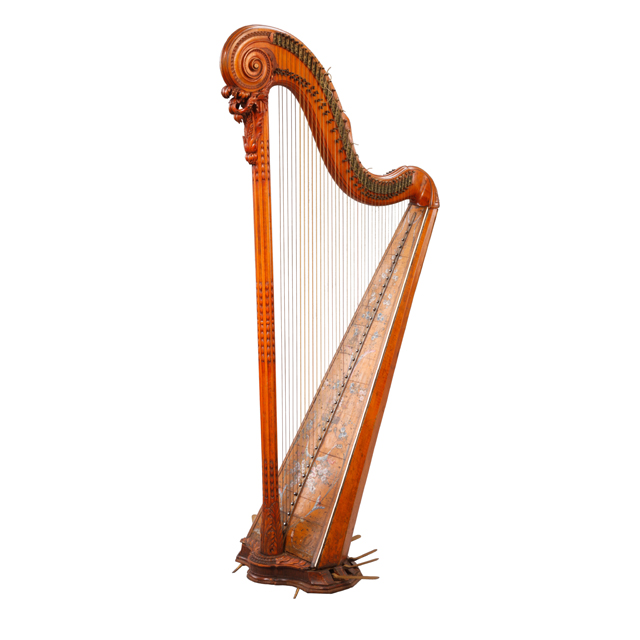
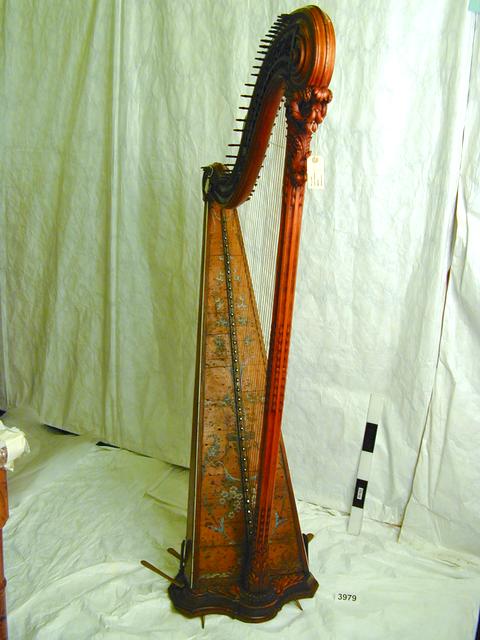
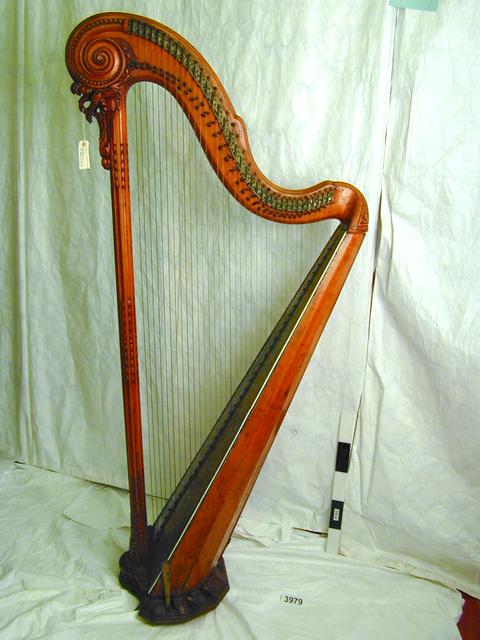
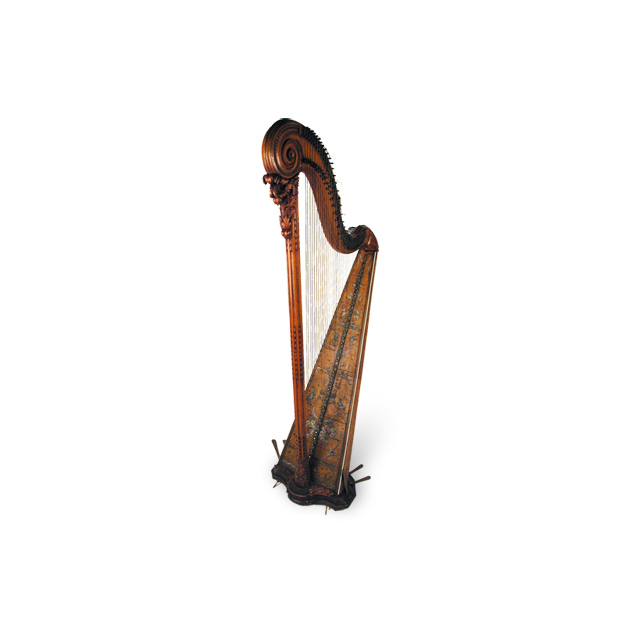
Single-action harp. There are two pedal-operated béquilles 'crutch' - shaped levers for each string, which raise the note of the string by a semitone by reducing its sounding length.
Elegant, single-action pedal harps, usually played by women, were a feature of many Paris salons. The single-action harp with seven pedals was built to play music in a variety of keys. Each pedal could be depressed once, turning a hook that engaged with all the strings of one note name. This reduced the strings’ vibrating length, thereby raising their notes by a semitone. The béquille 'crutch' action was invented by Georges and his son Jacques-Georges Cousineau, and was a sophisticated improvement on the earlier fork mechanism. Each string passes from the tuning peg, around an auxiliary peg functioning as a bridge, and between two crutch shaped levers which push against the string from opposing directions when a corresponding pedal is depressed, raising the pitch by a semitone.



